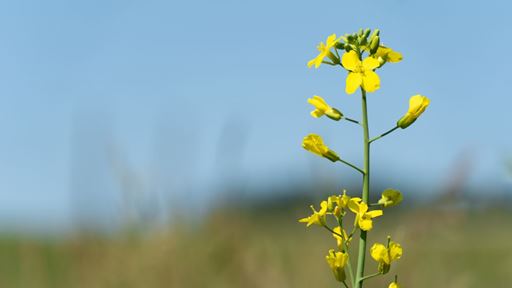Released on July 6, 2023
Crops are quickly progressing in the province with the warm temperatures and widespread rain received this past week. The sight of yellow canola and green wheat fields is now prominent on the landscape across Saskatchewan. Producers made substantial haying progress this past week. Although rain was received across the province, many areas need more to keep moisture levels adequate.
Generally, this week, the north received more rain than the south. The Odessa area, however, recorded the most rain received for the week with 42 mm. Prince Albert and Turtleford also received significant amounts of rainfall with 40 and 37 mm, respectively. Although rain was received, warm temperatures meant it didn't stay long and soil moisture began to diminish. Cropland topsoil moisture is rated as one per cent surplus, 42 per cent adequate, 42 per cent short, and 15 per cent very short. Hay and pasture topsoil moisture follows a similar pattern with 36 per cent adequate, 42 per cent short and 21 per cent very short. Topsoil moisture levels in the southwest and west central are the lowest for the province.

Sixty per cent of canola is in the flowering stage. Just over half, 56 per cent, of this year's flax crop is in the stem extension stage. Fall cereals are beginning to fill across the province, with 51 per cent of this year's crop heading out and 36 per cent at a dough stage. Spring cereals are not far behind, with 43 per cent of the crop heading out. Pulses are the most diverse in staging across the province, with 28 per cent in vegetative stages, 29 per cent flowering and 40 per cent beginning to pod.
Haying is well underway in the province. Forty-eight per cent of the hay crop has been cut for the first time this year, and 23 per cent has also been baled or silage. The quality of hay from the first cut is good to fair. Many producers are hoping for a good quality second cut for this year. Producers are closely monitoring pasture conditions with 36 per cent rated as good, 32 per cent fair and 20 per cent poor.
Crop damage this week comes from scattered hailstorms, heat stress and wind damage. Plow winds were a concern in the north. In addition to environmental damage, grasshoppers, other insects and gophers are the primary concerns for producers. Crop diseases are beginning to appear after wet and humid conditions accompanied the heat.
Producers are busy haying and spraying both insecticides and fungicides this week. They are also scouting their fields and hoping for additional moisture to ensure proper crop development.
When spraying, producers are reminded to always read the label and follow recommended rates. The 2023 Guide to Crop Protection is available to help producers with spraying decisions.
For many producers, this is still a stressful time of year and are reminded to take all safety precautions in all the work they do. The Farm Stress Line is there to help by providing support for producers toll free at 1-800-667-4442.
A complete, printable version of the Crop Report is available online https://www.saskatchewan.ca/crop-report.
Follow the 2023 Crop Report on Twitter at @SKAgriculture.
-30-
For more information, contact:
Mackenzie HladunAgriculture
Moose Jaw
Phone: 306-694-3592
Email: mackenzie.hladun@gov.sk.ca
